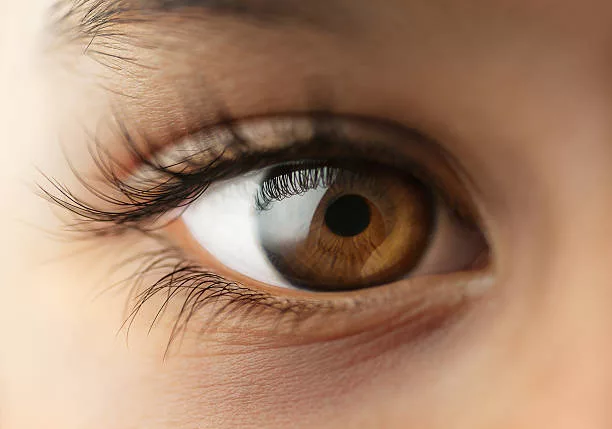The range of eye colors in humans – blue, green, brown, hazel, etc. – is based on the concentration and arrangement of melanin. However, no eye color is entirely black because even in the darkest eyes, there’s some level of pigment variation and light reflection.
Human eye color undergoes development and changes until around the age of 3. Nevertheless, the natural color of human eyes can’t be genuinely black. The appearance of black eyes might be influenced by lighting conditions, reflections from clothing, or the use of colored contact lenses.
The human eye is a complex organ with different layers and structures that contribute to its appearance and function. While eyes come in various shades and can appear quite dark, the absence of true black color in the iris is due to how light interacts with the pigments and structures within the eye.
1. It’s not something our genes permit:

Approximately 16 genes contribute to eye color, with HERC2 and OCA2 being the primary influencers. These genes regulate melanin levels in our irises, giving rise to a spectrum of hues from blue to gray. However, the deepest shade achievable is a very dark brown, not true black, due to the resulting colors of melanin in our eyes.
2. We’d likely find ourselves in tears constantly:

Items that appear black absorb more light to achieve their deep hue. This absorbed light and energy are then transformed into heat. If, by some genetic mechanism, our eyes were truly black, they might require substantial tear production to prevent overheating and dehydration due to the absorbed light energy.
3. Our eyes wouldn’t be safe against harmful light:

If our eyes were black, dealing with bright daylight would pose a challenge. Sunlight contains ultraviolet (UV) light, which black surfaces tend to absorb more than other colors. Extended exposure to UV rays can harm our eyes, causing issues such as cataracts or even skin cancer. Thankfully, our genetic design includes melanin in the iris, offering protection against UV light. Research indicates that melanin can neutralize over 99.9% of the absorbed UV radiation, shielding our eyes from sun-induced damage.
4. The most uncommon eye color found in nature:

Green eyes are, in fact, the rarest natural eye color, found in just around 2% of the global population. Additionally, rare conditions like ocular albinism can result in red or violet eyes, while heterochromia can lead to individuals having irises of different colors in each eye.










